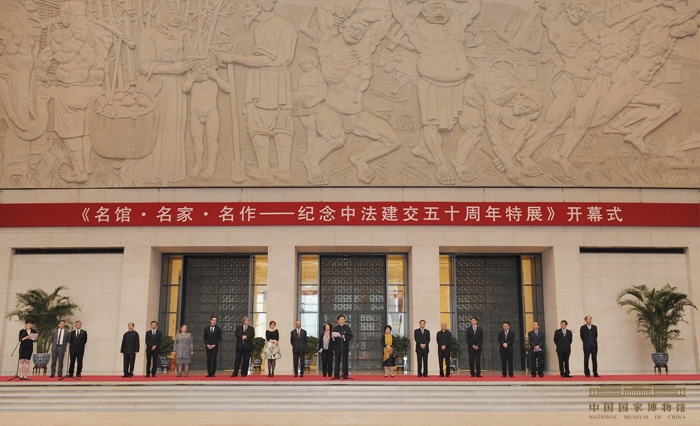9th “Croisements” Cultural Festival celebrates 50 years of Franco-Chinese ties

On April 11, the opening ceremony of the exhibition of "Famous Museums-Artists-Works" was held in the National Museum of China. The exhibition, as one of events celebrating "2014 'Croisements' Cultural Festival", is jointly sponsored by the National Museum of China and National Museum of France.
2014 marks the 50th anniversary of the establishment of diplomatic ties between China and France. Because of this important anniversary, the Ninth Franco-Chinese "Croisements" Cultural Festival will specially throw a grand banquet of culture and arts in more than 40 Chinese cities between April 11 and July 10. Nearly one thousand artists will participate in it.
China and France are both nations that trace great cultural and historical traditions. At the same time, both strive to preserve the cultural diversity within their borders. These are important bases upon which the two countries increase their contact and exchange. In 2001, UNESCO passed the "Universal Declaration on Cultural Diversity". Responding quickly to the declation, China and France initiated cultural festivals in 2003 and 2005 respectively, and in 2006, the first Franco-Chinese “Croisements” Cultural Festival was held. Since then, “Croisements” has become the largest cultural festival that France holds abroad and the biggest foreign culture festival in China.
Xu Jun, executive vice president of Nanjing University and a long-devoted scholar of Chinese-French literature translation and research, noted that the protection of cultural differences and diversity is particularly important with the increasing impact of economic globalization.
France has a long history of Sinology and many French scholars have dedicated themselves to translating Chinese literature into their mother tongue. The French publisher Éditons Gallimard has even listed the “Four Great Classical Novels” of Chinese literature inits Bibliothèque de la Pléiade.
Exchanges are mutual. In China, French literature was introduced to Chinese readers earlier than literatures of other languages. Yuan Xiaoyi, dean of the School of Foreign Languages at the East China Normal University, noted that Lin Shu’s translation of Alexandre Dumas's La Traviata was one of the earliest translations of a foreign work of literature.
"China and France can learn from each other's culture, help each other advance and discover and release new vitality through mutual exchange,"said Xu Jun.
China-French cultural exchange has gone through four periods. The earliest period dates from when King of France Louis IX assigned Guilelmus de Rubruquisas envoy to the East in 1253. The second period began in the 16th century, when 168 French Jesuits entered to China and produced a large number of works on China. The third period was marked by a series of events including the establishement of the Institut national des langueset civilizations orientales in 1840, opening Chinese language courses in 1843, launched the first international journal of sinology,T'oungPao with Holland in 1890 and in 1920, the Institut des Hautes Etudes Chinoises was established.Currently it is administered by the Institute de France. The fourth period was marked by the establishment of diplomatic ties in 1964.
France has long leading Sinology than other Western countries. Today, the cultural exchange between the two countries has reached an all time high, encompassing a broader array of topics shared to a greater degree of depth.
The Chinese version appeared in Chinese Social Sciences Today, No. 583, April 14, 2014
Translated by Feng Daimei
Revised by Charles Horne
The Chinese link: http://news.cssn.cn/zx/bwyc/201404/t20140415_1066591.shtml
